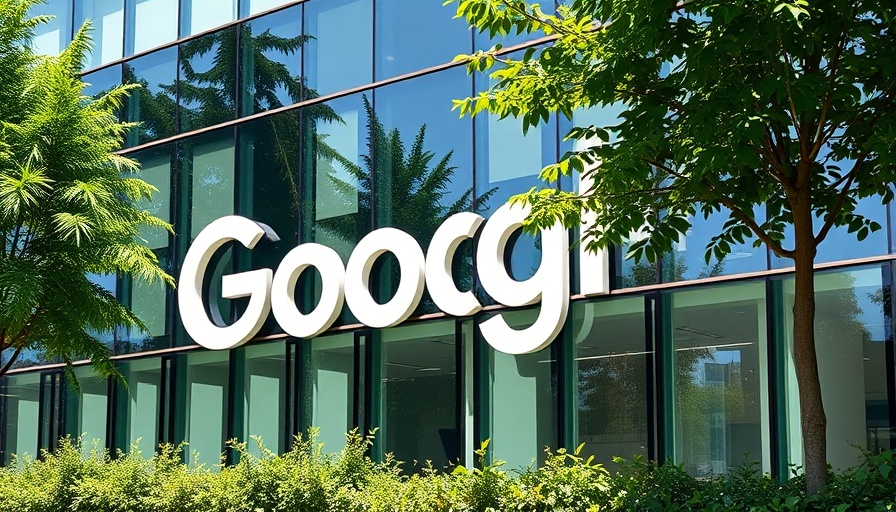
Understanding Google's Walled Garden: The Implications for Users and Marketers
Google has created what experts describe as a 'walled garden,' meaning it keeps users within its platform longer. In fact, recent data indicates that users make an average of 10 clicks on Google's site before venturing to an external site. This finding comes from a comprehensive 13-month study comparing traffic patterns between Google and its competitor, ChatGPT. While Google excels at holding on to users, ChatGPT is proving to be more effective in directing traffic to external URLs.
The Traffic Dynamics: Google vs. ChatGPT
According to an analysis of Similarweb data, Google reported a notable increase in its pages per visit metric, climbing to 10 as of March. This figure marks a significant rise, reflecting that users are engaging more with Google's features. The question arises: is Google truly becoming a 'search engine' or more of a comprehensive information hub that answers questions without needing to click elsewhere?
While Google boasts a staggering output of 175.5 million outgoing visits in March alone, ChatGPT managed to facilitate 57.6 million. Despite holding a much larger audience (nearly 6.8 times more users), Google still lags behind ChatGPT in efficiency, generating merely 0.6 visits per user compared to ChatGPT's 1.4.
Why Are Users Staying Longer on Google?
Google's strategy to increase how long visitors remain on its platform involves expanding its array of in-platform features. These features allow users to receive immediate answers without clicking through to other websites, enhancing the likelihood of interaction solely within Google. As a result, marketers must adapt their strategies to focus on capturing user attention in these key areas of Google search results.
According to SEO experts, achieving visibility in elements such as featured snippets, knowledge panels, and other SERP features has become increasingly essential. The landscape is shifting; traditional organic clicks are becoming harder to obtain, making it crucial for marketers to evolve their strategies.
Adapting to Changes: Insights for Marketers
To remain competitive in this changing environment, marketers need to recognize the significance of Google's walled garden. Users are engaging with multiple SERP features before arriving at a destination URL, challenging the methods of attribution and necessitating a more adaptive approach to content strategy.
Furthermore, AI-driven platforms like ChatGPT are quickly emerging as complementary sources of traffic that provide more visits per user. This can influence how businesses develop their overall digital marketing strategies, as understanding user behavior and trends is key to leveraging these platforms effectively.
The Future Landscape of Search: Predictions and Trends
As we look ahead into 2025 and beyond, the trends indicated by this data on Google and ChatGPT suggest a transformative shift in the tech industry. With newer AI search platforms like Perplexity and Grok gaining momentum, businesses may need to rethink their interactions with search engines and AI technology altogether. The landscape is becoming crowded, and taking initiative now could reshape marketing strategies for years to come.
In conclusion, staying informed about these shifts and technological advancements will be crucial for success in SEO and digital marketing. Knowledge is power—understanding what works in this new digital age could be the difference between thriving and merely surviving.
 Add Row
Add Row  Add
Add 




Write A Comment